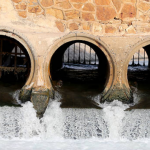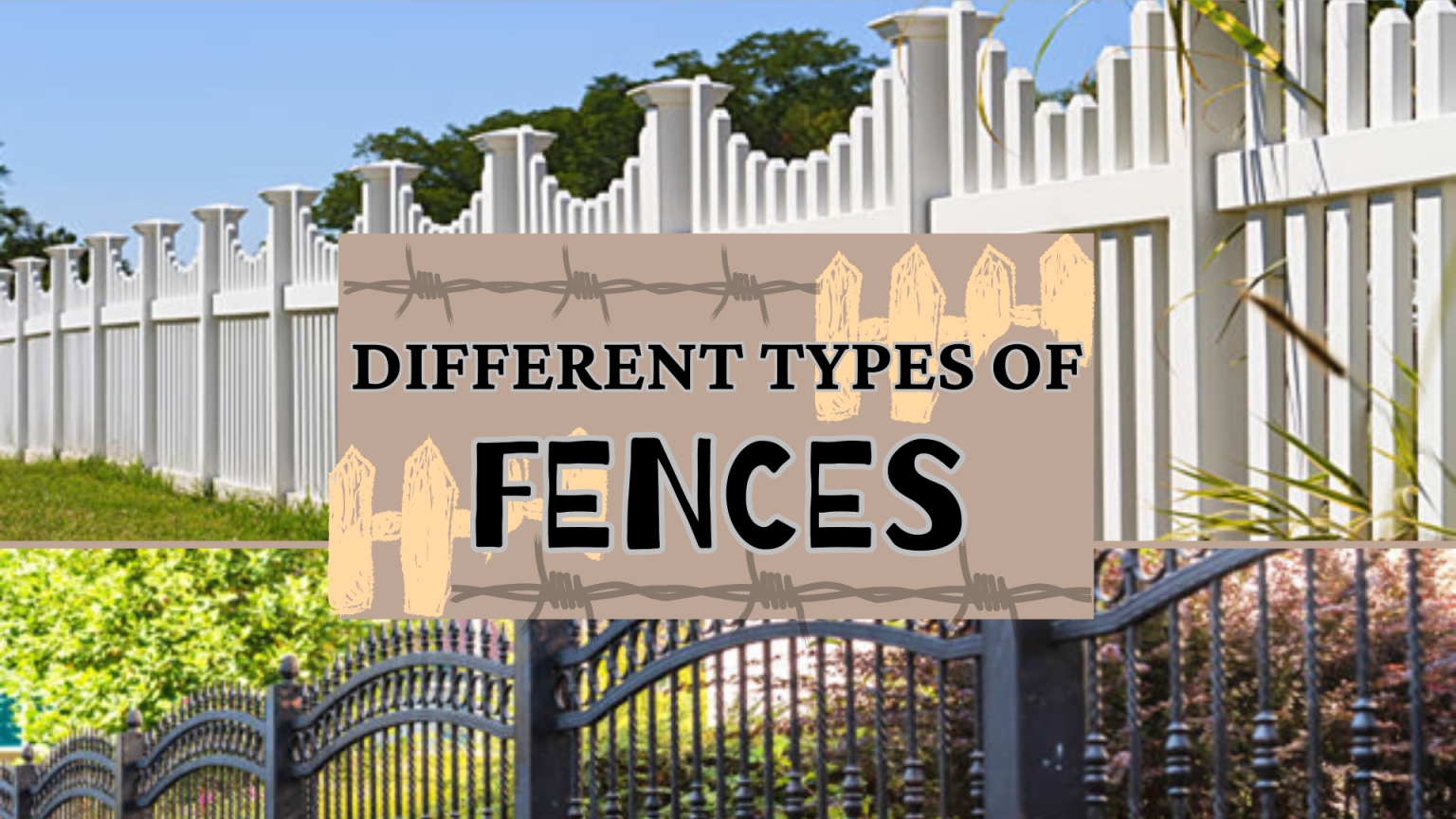
When selecting a fence for your yard, it is important to consider the structure’s design, privacy, security, and cost. Because a fence improves the aesthetics of your property in addition to providing privacy and protection. In this article, you can learn more about the different types of fences.
DIFFERENT TYPES OF FENCES
There are several factors to consider when selecting the right type of fence for your property. Each type of fence, from wood to vinyl to chain link to iron, has its own set of advantages and disadvantages. Here are some examples of different types of fences:
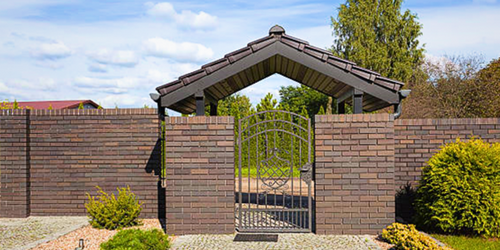
BRICK WALL FENCE
These fences are fairly common and can be found in a wide range of structures, including homes, offices, institutions, and other structures. A brick wall is the most common, traditional, and widely used type of garden fencing.
It is one of the most common systems in residential colonies, particularly in Asia, India, and Africa. It is possible to build low and high boundary walls. It is entirely up to you, your preferences, and your needs.
Many people like to cover the exposed brick wall fencing with creepers or paint it with high-quality exterior paint to make it more colourful. A brick wall can also be used in conjunction with other alternatives such as iron fencing, barbed wire, and more.
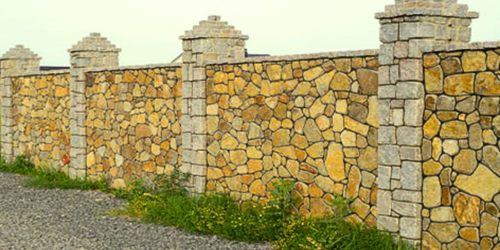
STONE WALL FENCE
A stone wall with iron fencing is a sophisticated style that gives the impression of a fort. It’s beautiful, long-lasting, and environmentally friendly. It has the appearance of a precast stone wall.
To determine the best style for your property, consult with your landscaper. You’ll love how much less expensive it is than prefabricated stone and how simple it is to install.
To balance the boundary wall and make it more durable, you can build the pillars out of stones. It is low-maintenance and long-lasting, and it can withstand weather turbulence.
It has a lower carbon footprint because it contains 25% recycled material. This fence is ideal for privacy, security, and enhancing the appearance of your home.
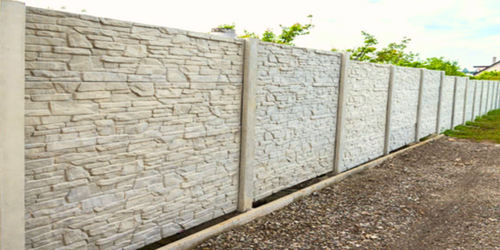
PRECAST CONCRETE FENCE
Nowadays, precast concrete fences are very popular. In factories, precast concrete panels are formed in a metal mould. It is a versatile and long-lasting building material that is used in a wide range of residential and commercial projects.
It is quick and simple to install, long-lasting, and simple to maintain. In the long run, precast concrete fences are less expensive than wood fences. If there is a large wall, various design options can be explored; otherwise, you will have to choose from the manufacturer’s provided options, which may be limited. These panels are heavy and must be installed by erection machinery and a skilled worker. They are fire resistant, termite resistant, climate resistant, and difficult to break. A low cost of maintenance is an added benefit.

WOODEN FENCE
Wooden fences offer greater security and privacy than other types of fences. They can be as simple or as elaborate as your financial constraints allow. The type of wood you choose will also have an impact on your budget.
These types of fences are not as long-lasting as those made of synthetic materials. They may also need to be replaced more frequently, depending on the type of wood. Spruce, for example, may need to be replaced after seven years, whereas Eastern red cedar can live for decades.
Some wooden fences have even lasted over 50 years! For those looking to save money, pressure-treated pine is a popular and long-lasting option.
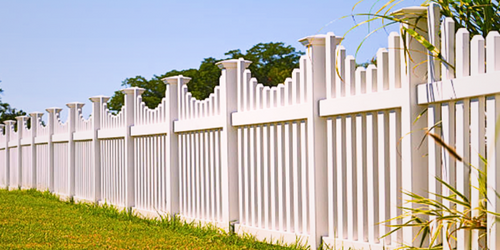
VINYL FENCE
Vinyl fencing is a popular choice since it is resistant to weather and pests. It may also be easily maintained and last for many years. Yet, compared to other fencing materials, it is more expensive.
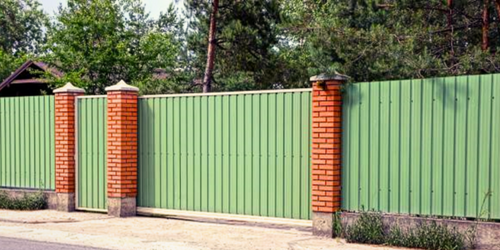
ALUMINUM FENCE
Consider that you’re looking for a low-maintenance fence that will match your home and is also aesthetically pleasing. In that instance, an aluminum fence is the best option because of its strength, durability, and ease of maintenance.
It’s also quick and easy to set up, sustainable, and durable. Several styles of aluminum fences are provided depending on the level of seclusion required.
For instance, solid panel fences offer total seclusion, while picket fences let you see through them. There are other alternatives for hybrid materials that combine vinyl and aluminum that can be purchased.
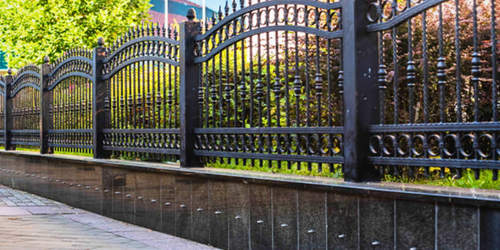
WROUGHT IRON FENCE
Iron fences are an excellent option for people seeking a more beautiful and sophisticated appearance. They are also incredibly strong and have a long lifespan. Compared to other fencing materials, they are more expensive.
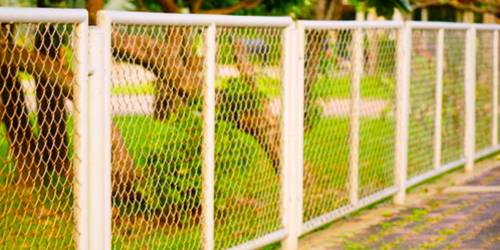
CHAIN-LINKED FENCE
Chain-link fences are a popular option for homeowners searching for a low-cost solution. They are also simple to install and maintain. But if they aren’t frequently maintained, they may be vulnerable to rust and corrosion
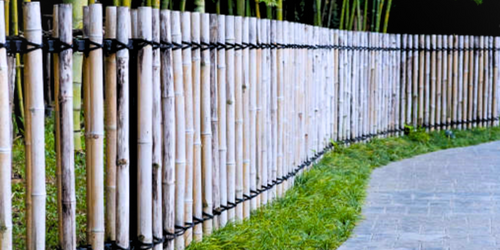
BAMBOO FENCE
Bamboo fences are getting popular due to their natural appearance and eco-friendliness. They are likewise quite simple to install. Although they can be prone to rot and decay, they are not as resilient as other types of fencing materials.
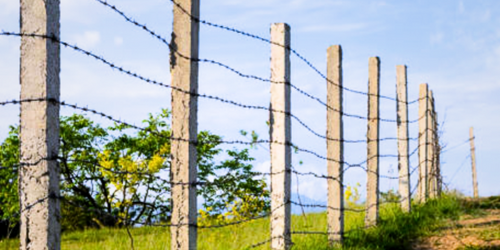
BARBED WIRE FENCE
Barbed-wire fences are often made of steel and used to keep livestock and cattle away from houses. This fencing is made of rolled and twisted wire; however, unlike typical galvanized wire, it is twined rather than interlaced.
Despite not being particularly attractive, it may be the most affordable and simple fencing option. It is fixed to prefabricated cement channels or poles.
Trying to cross through or over barbed wire may give thieves or animals discomfort and possibly injury, but there is no absolute bar.
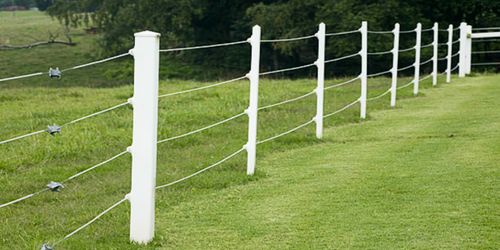
ELECTRIC FENCE
Steel wire that has been electrified with alternating or direct current from an electric power source is commonly used to construct electric fences.
In order to preserve the electrical potential difference, the powered wire of the fence is shielded from contact with the ground. If a person comes into contact with the fence, they will receive an electric shock.
These fences, which are frequently used in agriculture, emit precisely the right amount of electricity to give anyone who touches them apprehension.
The most usual places to see electric fences are high-security settings like military bases, government buildings, jails, and other locations where trespassing is deterred without the use of lethal force.
ALSO READ: Types of Gabion | Steel Deck Installation and Construction | Types of Retaining Wall
Factors to Consider When Choosing a Fence
There are a few things to take into consideration while choosing the ideal fence for your property. Consider the following factors, which range from the size of your property to the fence’s purpose:
1
PURPOSE
What is the fence’s purpose? Are you looking to improve your property’s privacy or add a decorative touch? You may make an informed choice if you are aware of the fence’s purpose.
2
SIZE
How big is your area? When choosing a fence, it’s important to take into consideration the size of your property. You must select a fence that meets your demands, from a little fence for a small yard to a massive fence for a vast property.
3
MATERIAL
What kind of material do you intend to use for your fence? Each type of material, from wood to vinyl to chain link to iron, has advantages and disadvantages of its own.
4
DESIGN
What style of fence design are you looking for? There are many various designs to choose from, such as shadowbox, ranch, and privacy.
Benefits of Installing a Fence
There are numerous advantages to having a fence installed on your property. A fence can provide several advantages, including greater safety and security and increased privacy. Some of the key advantages of installing a fence are as follows:
1
PRIVACY
A fence can provide you with the privacy you need while also allowing you to appreciate your outdoor space. A fence may provide you with the privacy you need, whether you’re looking to block prying eyes from your backyard or create a private area for entertainment.
2
PROPERTY VALUE
Adding a fence can increase the value of your house. It not only creates a wall between you and your neighbors, but it also improves the appearance of your house as a whole.
3
SAFETY AND SECURITY
A fence can provide your family with safety and security. A fence may provide you with the protection you need, whether it’s to keep children and pets in or unwanted visitors out.
4
NOISE REDUCTION
A fence can help reduce outside noise. Whether it’s traffic or noisy neighbours, a fence can help reduce noise on your property.
How to Choose the Perfect Fencing for Your Property
Once you’ve learned about the different types of fences, designs, and materials, it’s time to select the best one for your property. Here are some pointers to assist you in making the best choice:
1
CONSIDER YOUR NEEDS
It’s important to think about your needs before choosing a fence. Are you looking to spruce up your property’s appearance or increase privacy? Knowing your requirements will allow you to make an informed decision.
2
UNDERSTAND REGULATION
It’s important to understand the rules and specifications that apply in your area. Before making a choice, make sure to conduct research on everything from height limitations to material specifications.
3
GET CREATIVE
Take some artistic license with the colors, patterns, and textures. There are numerous ways to personalize your fence, from painting it a vibrant color to adding a unique texture.
4
RESEARCH MATERIALS
Find out more about the various materials to choose the one that best suits your needs. Every material, from iron to chain link and from wood to vinyl, has advantages and disadvantages of its own.



